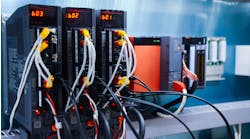|
Related articles Reviewing the use of fouling factors in heat exchanger design |
Today, more than ever, recovering heat through heat exchangers is vital to improving plant efficiency. It also is a dreadful chore for any plant engineer because there’s no quick fix. Let’s focus on how to spot common efficiency problems with your current system and possible solutions.
Heat exchangers are typically fixed pieces of equipment with virtually no knobs to turn. Fouling is the most common cause of efficiency problems. If the exchanger suffers from unexpected efficiency loss due to fouling, it’s usually a costly fix involving reduced rates and incurring a large financial loss. Living with a fouled exchanger generally costs money and unit capacity. Monitoring your exchangers can optimize shut downs and will give you valuable information but hardly prevents a problem.
The five major causes of excessive fouling in exchangers are unexpected thermal reactions, lower than design velocities, mixture incompatibility, inorganic deposits and organic deposits. The three solutions to these problems are design, chemical and mechanical cleaning.
The most common exchanger, the old shell and tube, is the bread and butter, and for most, only exchanger. They are typically the standard because they’re relatively easy to clean. In the past 10 years, the industry has started to move away from this design, favoring plate exchangers or modified shell and tube. Plates are less prone to fouling but suffer from cleaning problems. In most cases, the plate exchanger can only be chemically cleaned but a few mechanical cleaners exist for specific designs.
Twisted tube exchangers, an innovation to shell and tube exchangers, provide much more surface area and a better temperature profile. The tube bundle can be retrofitted to an existing shell, saving foundation and shell cost plus time and labor. A 50% improvement in overall heat transfer can be expected, although actual performance depends on current configuration and expected values. The design also reduces fouling because the shell side fluid moves at a uniformly higher velocity.
Ongoing treatment via chemical programs can beexpensive, but in certain cases, can prevent or reduce fouling. However, chemical treatment is so specific that you must rely on the chemical vendor to recommend the appropriate chemical. In addition, that chemical will end up somewhere, if it doesn’t degrade, and you must be sure it doesn’t cause unexpected problems. So, get a good baseline on your current fouling so that you can monitor the effects and cost savings of the program. In most cases, you must start the program right after the exchanger is cleaned. Antifoulant chemicals seldom work on already fouled exchangers. However, some exchangers respond well to deposit removal treatments. I used citrus acid to clean the cooling waterside of my crucial cooling exchangers before summer so that I could have better summer cooling.
Mechanical solutions include filters, inlet cyclones, online mechanical brushes, vibrating springs and a host of other scrubbing devices. Some vendors now offer low-fouling exchangers with a built-in mechanical scour. These new exchangers mix solid particles in the tube side fluid to scour the tube walls. The solid particles are removed by a cyclone in the outlet and recycled to the inlet.
If you can’t prevent your fouling problem, consider a multi-shell design with the ability to remove exchangers from service. Proper configuration of multi-shell exchangers can provide greater temperature approach and better ongoing operations. One way to save on downtime is to have an extra tube bundles available for quick exchange. If you design smartly, you can use the same tube design in various exchanger locations and thus have a common spare.
To choose the right solution for your process, first, you need to gather enough information over time to get a good sense of your fouling rate. In addition, you need to know what events, like feed or rate changes, have the most drastic effect. Next during shutdown, take a sample of the deposit when the exchanger is opened (remember that flushing may change the deposit). From the deposit analyses and your observation on whether velocity, feed type or other events affect your rate, determine if a mechanical or chemical solution is possible. If not, you can redesign to minimize the fouling effect, minimize your losses by being able to take exchangers off-line during your normal run or having a replacement bundle available for a quick exchange.
